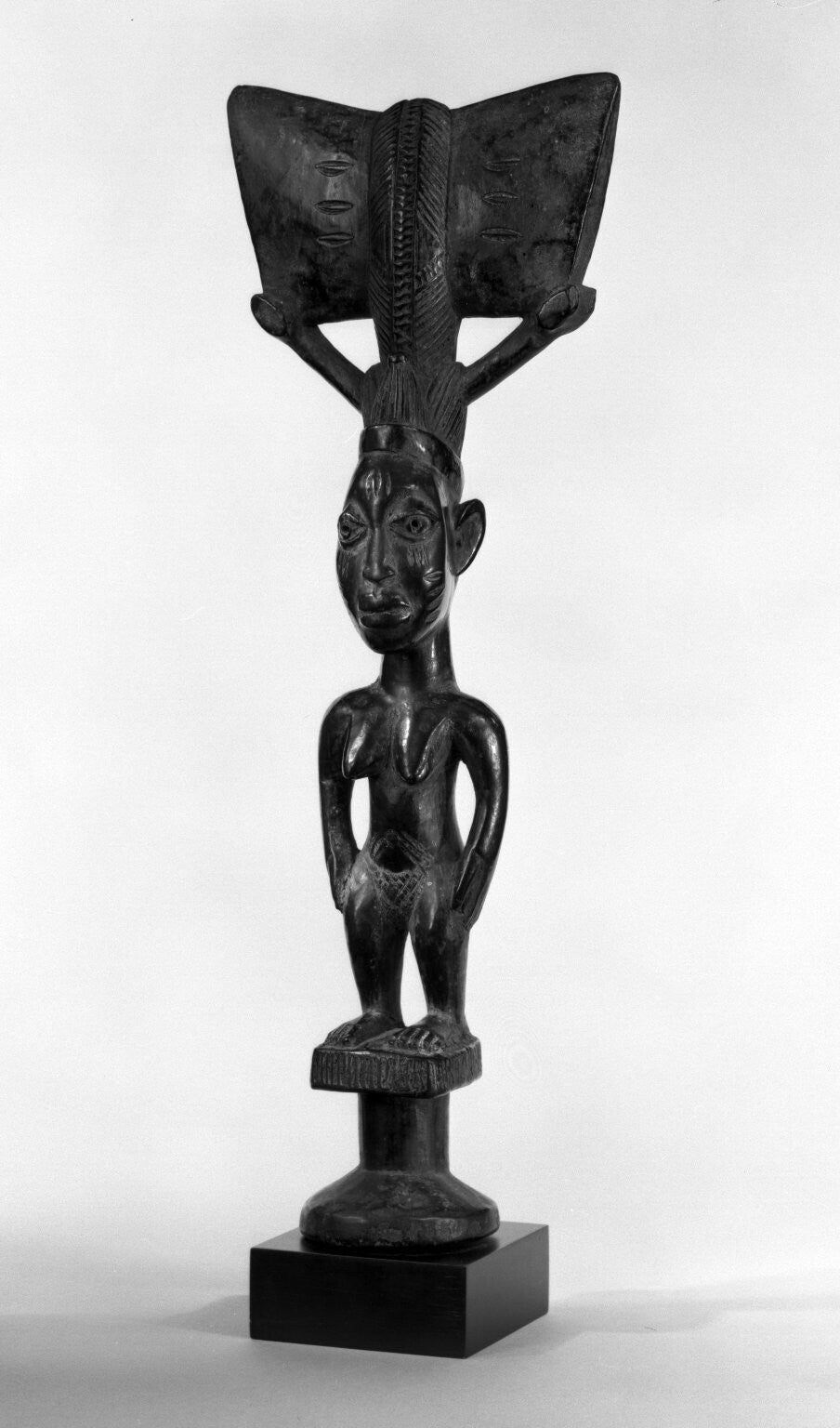
A Yorùbá (Igbomina subgroup) dance wand (oshe shango), late 19th or early 20th century. Wood, pigment, 19 1/2 x 7 x 3 1/4 in. (49.5 x 17.8 x 8.3 cm). (Brooklyn Museum, Frank L. Babbott Fund and Designated Purchase Fund, 79.27. Photo: Brooklyn Museum, CC BY)
Discussion Questions
- What does the existence of this artwork suggest about the cultural practices of the Yorùbá?
- In the Yorùbá tradition, Shango is the god of thunder, and “Oshe Sango” is the name given to wands used by dancers worshiping Shango. What thunder imagery do you see in this wand?
- This artwork was created against the backdrop of colonization. In what ways does it reflect European influence?